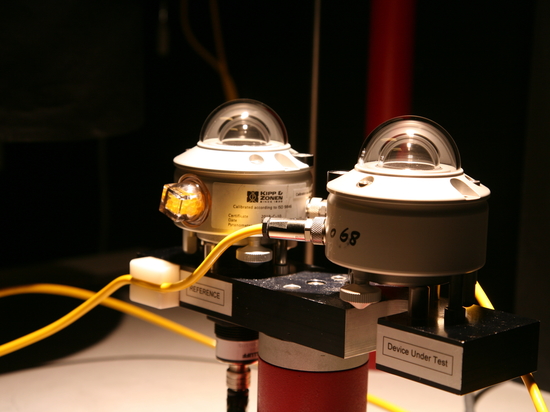
#Product Trends
Different Components of Solar Radiation
Many people have asked us for an illustration that gives a simple overview of the three components of incoming short-wave solar radiation: direct, diffuse and global. We've created a drawing that we hope will make this clear.
Direct Radiation
The basis of the measurement is a SOLYS 2 sun tracker pointing a CHP 1 pyrheliometer at the centre of the sun. The CHP 1 has a full opening view angle of 5° and measures the normal incidence direct irradiance from the sun and its aureole – shown by the yellow beam.
Diffuse Radiation
Some of the direct radiation from the sun is absorbed in the atmosphere and some is scattered by clouds, aerosols, and molecules in all directions. This scattered component is the diffuse solar radiation that comes from the sky, and is indicated by the blue arrows.
A CMP series pyranometer mounted on the SOLYS 2 can see the complete sky hemisphere, but the direct radiation from the sun (yellow beam) is blocked by a shading ball that moves with the tracker.
Therefore, the pyranometer only measures the diffuse irradiance. There is diffuse radiation mixed with the direct beam, but the pyrheliometer only sees it from immediately around the sun because of its collimation tube design.
Global Radiation
The second CMP pyranometer can see both the direct and diffuse radiation and measures the horizontal global irradiance.
Units and Symbols
Irradiance is measured in W/m2 and the World Meteorological Organisation (WMO) symbols for the three components of incoming short-wave solar radiation are given below.
Direct Solar Irradiance = E
Diffuse Sky Irradiance = Ed↓
Global Irradiance = Eg↓
Solar Zenith Angle
When the sun is exactly overhead, at zenith, the direct radiation beam falling on the pyrheliometer and the global pyranometer is circular in cross-section. However, as the sun moves towards the horizon the direct beam strikes the ground, and the pyranometer detector, at an increasing angle and becomes elliptical. This has the effect of reducing the energy per unit area.
The pyrheliometer readings must be corrected for this effect when calculating global irradiance from direct and diffuse radiation measurements. This is often termed ‘cosine correction’.
Global Irradiance Eg↓ = E.cos θ + Ed↓
(where θ is the solar zenith angle)






